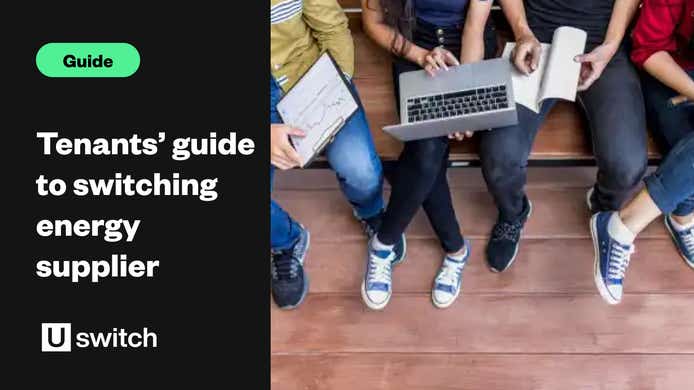NB: The Feed in Tariff scheme was closed to new applicants on 31 March 2019, but if you already receive payments these will continue until the end of the initial 20-year period.
Whether you have solar panels or are thinking about getting them installed, one thing you don’t have to worry about is that they’ll tie you to a single energy supplier. In addition to letting you generate some of your own electricity, solar panels make it possible to not just store any surplus electricity created in batteries but also sell it back to the grid.
Even though the Feed-In Tariff has been closed to new customers for around six years, it’s still possible to make money from a new solar panel installation. This is done by signing up to the Smart Export Guarantee (SEG) scheme, which pays you an agreed rate for every kilowatt of electricity you export back to the grid.
Note, the government doesn’t make FiT or SEG payments – energy suppliers who have signed up to either scheme are responsible for administering the scheme and making payments. They’re sometimes referred to as FiT licensees or SEG licensees.
Differences between the Feed-in Tariff and Smart Export Guarantee
| Feed-in Tariff | Smart Export Guarantee |
|---|---|
| Ran from June 2010 until March 2019, when it was closed to new applications | Currently open to any solar panel owner – including those who currently receive FiT payments |
| Payments come in two parts: a generation tariff, which pays a sum based on the total amount of electricity generated, and an export tariff, a smaller amount loosely based on how much electricity is exported back to the grid | Payments are exclusively an export tariff, based solely on how much electricity you export back to the grid, as recorded by your smart meter |
| Tariff rates are fixed by Ofgem – they were set when the installation was registered and increase in line with inflation each year | Tariff rates are set by each supplier separately. Tariffs can therefore vary considerably from supplier to supplier. Many suppliers offer a range of different export tariffs depending on whether you’re an existing customer or meet certain criteria (such as having solar panels and battery storage or an EV). |
How does switching energy supplier with solar panels work?
If you’re looking to cut your energy bills, then moving from one energy supplier to another is the same for solar panel owners as well as regular householders: find the best deal, then switch. You can contact another energy supplier directly to switch or make use of a comparison website like uSwitch to find the best deal.
If you’re receiving FiT payments, you can switch to a new energy provider without taking your FiT with you, although your old supplier may push for you to transfer your FiT to your new provider. You’re under no obligation to do so and may not be able to if you switch to a smaller supplier who isn’t a voluntary FiT licensee. In either case, your old supplier is required to continue making FiT payments. If they stop making payments, make a complaint.
The same is true for those on SEG tariffs, but it’s a bit more complicated. You can in theory move to another supplier without moving your SEG tariff, but you may find yourself moved to a less generous export rate by your old supplier. That’s because many supplies offer the best rates to their own customers.
You should also check to verify your export tariff is a SEG one – some smaller suppliers, including 100Green, offer export tariffs for solar panel users, but these aren’t covered by the Smart Export Guarantee. In the case of 100Green, its export tariff is only available to customers who take their electricity from the company.
If I switch energy supplier, will my export payments change?
In most cases, no. If you receive FiT export payments, then these are set at a fixed rate by Ofgem regardless of which FiT licensee you’re with (and remember, you’re under no obligation to switch FiT licensee when changing energy supplier).
Things are a little more complicated with SEG export tariffs. If you’re currently signed up to a SEG tariff with the supplier you’re about to leave, you may find you’re no longer eligible to take that tariff (or make do with a lower rate). This is because some suppliers offer a range of SEG export tariffs depending on different criteria, including whether you get your gas and electricity from that supplier. Examples of SEG tariffs reserved for customers include E.ON Next Premium, Octoplus Flux and So Energy So Bright.
Do all suppliers pay export tariffs?
No. Only energy suppliers with more than 150,000 customers are obliged to offer SEG export tariffs, while only those with 250,000 or more must provide FiT payments. They include the big six energy suppliers: British Gas, EDF Energy, E.ON Next, Octopus Energy, OVO Energy and ScottishPower.
Some smaller companies also offer FiT and/or SEG payments – Ofgem publishes separate lists of both FiT licensees and SEG licensees. Others my offer their own form of export tariff, but these aren’t SEG tariffs and are often restricted to those who take their energy from the supplier, so if you switch supplier, you’ll lose access to the tariff. They include 100Green and Ecotricity, which is planning to roll out its own SET (Smart Export Tariff) to customers in the near future.
If I have a Feed-In Tariff, can I change to the Smart Export Guarantee?
Yes, you can discard the FiT export rate and replace it with a SEG tariff while retaining the main generation tariff portion of the FiT payment. This means you’d still receive a FiT payment paying you for all the electricity you produce on a quarterly basis, and then you’d receive separate payments for the electricity you export through a SEG tariff.
Things to consider before changing include:
| Consideration | FiT export rates | SEG tariff rates |
|---|---|---|
| Price per kWh | Fixed, but rise in line with inflation. Currently around 5-7p/kWh. | Set by individual suppliers and can be as low as 0.01p/kWh (but also as high as 20-40p/kWh. |
| Qualifying | Once signed up, your payments are guaranteed. | Higher-rate tariffs are usually restricted to customers who meet certain criteria. |
| Amount | 50% of all the electricity generated is assumed to have been exported. | You’re paid for the exact amount of unused electricity you export back to the grid, as recorded by your smart export meter. |
Ultimately, it will come down to how much electricity you usually export back to the grid and the available SEG tariff rates. How much is exported will depend on various factors, such as:
- Size of solar array (kWh)
- Typical electricity consumption
- Whether you have battery storage
If – for example – you don’t have battery storage and aren’t at home during the day, chances are that most of the electricity you generate goes back to the grid. Therefore, you may be able to make more from switching to a SEG tariff.
One word of warning: once you’ve switched to a SEG tariff, you won’t be able to switch back to FiT export payments (although your generation tariff will remain unaffected).
To find out how to opt out of FiT export payments, contact your FiT licensee.



